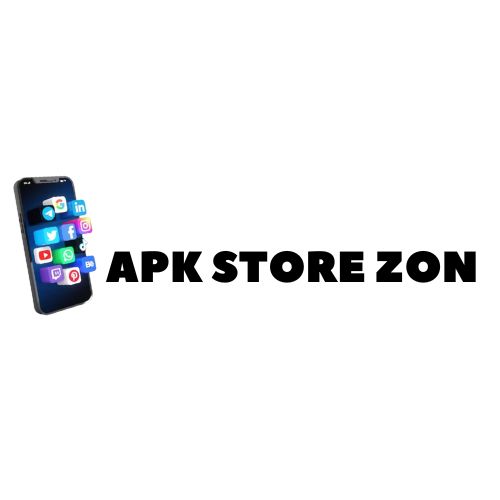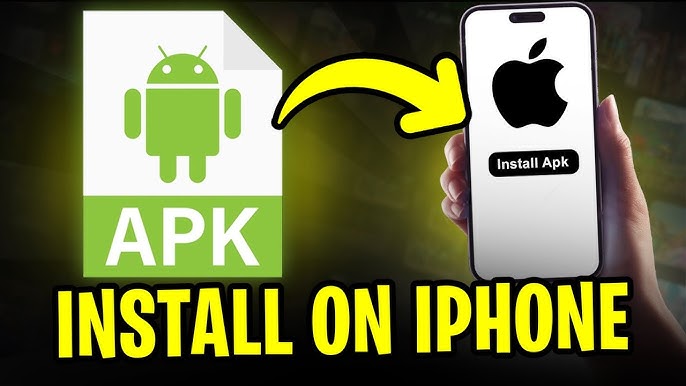Introduction
In the ever-evolving world of mobile apps, the Android operating system has taken the lead with its wide variety of applications, many of which are not available on iOS. For iPhone users, this often creates a problem when they want to use certain Android apps that are only available as APK files. If you’re wondering how to install an APK on an iPhone or what an APK installer is, you’ve come to the right place.
This comprehensive guide will walk you through the process of APK installation, the limitations, and whether it’s possible to install APK on iPhones. So, let’s dive into understanding APK files, the tools you need, and how to make it work on your iPhone.
What is an APK file?
APK stands for Android Package Kit. It is the file format used by Android operating systems for distributing and installing applications. These files contain all the resources, code, and metadata required for an app to function. While Android users can directly download and install APK files on their devices, iOS consumers face certain restrictions due to Apple’s closed ecosystem.
What is an APK installer?
An APK Installer is a tool or application designed to help you install APK files on your Android device. The installer simplifies the process, allowing users to bypass Google Play Store restrictions and manually install APKs.
However, when it comes to iPhones, the process is more complicated due to Apple’s restrictions on third-party app installations. iPhone users cannot directly install APK files as they are not natively supported by iOS. This makes using an APK installer on an iPhone a bit of a challenge.
Can You Install APK on iPhone?
While it is impossible to install APK files directly on iOS devices, there are alternative methods and workarounds. Let’s explore the options:
- Using a Third-Party App Store
There are third-party app stores, such as Cydia (for jailbroken devices), that allow the installation of apps that are not available on the Apple App Store. However, this process involves jailbreaking your iPhone, which has its risks, including voiding your warranty and security vulnerabilities. - Using a Mac or Windows Computer
There are methods that involve using a PC or Mac to sideload APK files onto your iPhone. For example, software like AltStore allows users to sideload APKs by converting them into formats compatible with iOS. - Using an Android Emulator
Another workaround is to use an Android emulator for the iPhone. This lets you run Android apps within the iOS environment, though the performance might not be ideal.
Step-by-Step Guide: How to Install APK on iPhone (Indirect Methods)
Method 1: Installing APK via AltStore (Using a Mac or Windows PC)
Prerequisites:
- A computer (Mac or Windows)
- A USB cable to connect your iPhone to the computer
- AltStore software installed on your PC
- An APK file
Steps:
- Install AltStore on Your iPhone
First, download and install AltStore on your computer. Open AltStore and connect your iPhone via USB. Follow the on-screen instructions to install AltStore on your iPhone. - Convert APK to IPA
APK files need to be converted to IPA (iOS App file format) before they can be installed. Use a conversion tool or online service to convert your APK file into an IPA file. - Install IPA Using AltStore
After conversion, launch AltStore on your iPhone and upload the IPA file from your computer to AltStore. You can now install the converted app on your iPhone.
Method 2: Using an Android Emulator (For Running Android Apps on iPhone)
While Android emulators on iOS are not as seamless as on Android, there are still options like Cider Emulator or iAndroid Emulator that enable iPhone users to run Android apps. Keep in mind that emulators may not provide the same level of performance as a native Android device.
- Download an Android Emulator
Search for Android emulators compatible with iOS and install them from third-party websites (since they are not available in the App Store). - Install the APK on the Emulator
Once the emulator is set up, you can install APKs directly on it and run Android apps on your iPhone.
Limitations of Installing APK on iPhone
- Security Risks: Installing APKs on your iPhone, especially using third-party methods, can expose your device to malware and other security threats.
- App Performance: Running Android apps on an emulator or through sideloading may result in suboptimal performance.
- Legal Issues: Jailbreaking your device to install apps can void warranties and violate Apple’s terms of service.
- App Compatibility: Not all Android apps will function properly on an iPhone, especially if you’re using workarounds like emulators.
Is It Worth Installing APK on iPhone?
While the idea of running Android apps on an iPhone can be tempting, it is important to consider the potential risks and limitations involved. Unless you absolutely need a specific Android app that isn’t available on iOS, it might be better to stick with the iOS ecosystem for the best performance, security, and user experience.
FAQs (Frequently Asked Questions)
1. Can I install APKs directly on an iPhone?
No, iPhones do not support APK files natively. You need to convert APKs to IPA format or use workarounds like emulators.
2. What is the best method to install an APK on an iPhone?
The best method involves using a computer with AltStore to convert and install the APK as an IPA file.
3. Is jailbreaking my iPhone safe for installing APK files?
Jailbreaking can open up security risks and void your warranty, so it’s generally not recommended unless you’re comfortable with those risks.
4. Are Android emulators good for running APKs on iPhones?
While some emulators can run Android apps on iOS, the performance and compatibility are often limited.
5. Are there any alternatives to APK files for iPhone apps?
Yes, you can always check the iOS App Store for alternative apps that might offer similar functionality to the Android app you want.
Conclusion
Although installing APK files on an iPhone isn’t straightforward, there are various workarounds, like using AltStore or Android emulators to get Android apps on your iOS device. However, keep in mind the limitations and security risks that come with these methods. If you value security and stability, sticking to iOS-native apps from the App Store is always the best option.
For users determined to get Android apps on their iPhones, this guide should help navigate the available options. Make sure to follow the steps carefully, and always prioritize your device’s safety by using trusted software and sources.







